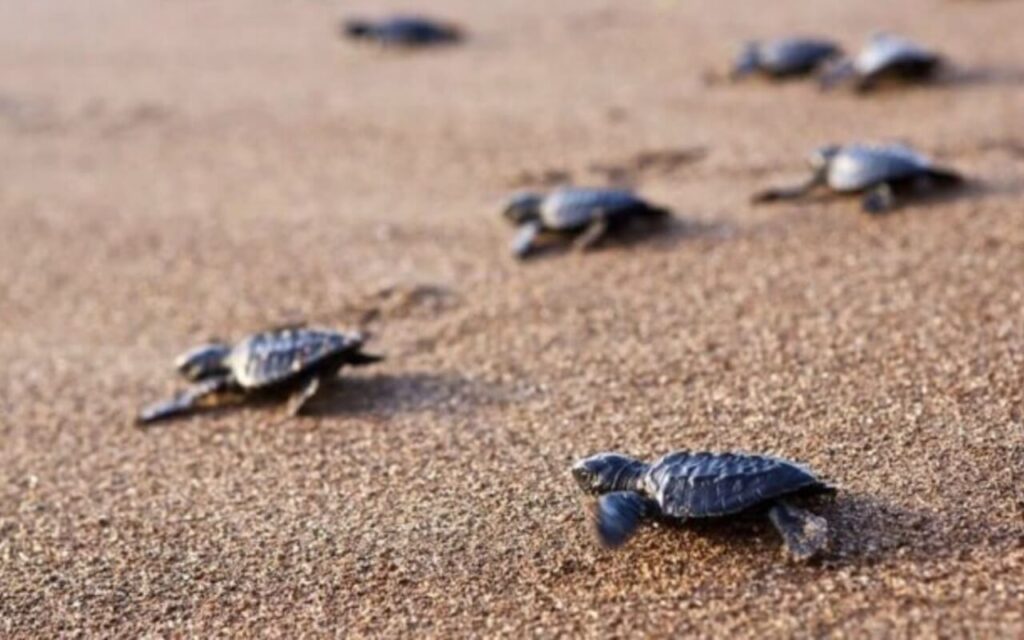
Turtle Nesting in Goa is one of the most fascinating natural events on India’s west coast. Endangered Olive Ridley turtles arrive on Goa’s quiet beaches every year to lay their eggs. It begins around mid October until May.This unique phenomenon highlights the region’s rich coastal biodiversity and the need to protect these fragile marine habitats. As eco-tourism increases, travellers must learn how to witness this rare event responsibly.
Conservation Efforts Behind the Scenes
Goa’s Forest Department and local NGOs lead important conservation programs that keep Olive Ridley nesting in Goa safe and successful. Volunteers patrol the beaches at night, protect nests from predators, and create temporary hatcheries. Their work ensures that hundreds of hatchlings safely return to the Arabian Sea. These efforts show how community involvement strengthens Goa’s wildlife protection.
Top Beaches to Witness the Event
Some beaches play a major role in Turtle Nesting in Goa, especially Morjim Beach, popularly known as “Turtle Beach.” Its peaceful environment and restricted activities make it a natural sanctuary. Galgibaga, Agonda, and Mandrem also serve as protected nesting zones. These beaches maintain low light and minimal disturbance during nesting season, allowing turtles to nest without stress.
How Tourists Can Act Responsibly
Tourists significantly influence the success of Olive Ridley nesting in Goa. When visitors avoid flashlights, loud music, and beach bonfires, they help create a safe environment for nesting turtles. Keeping distance from nests, following guidelines from forest guards, and staying on marked paths all contribute to better survival rates for hatchlings. Responsible tourism strengthens Goa’s conservation goals.
Why Turtle Nesting Goa Matters
Turtle Nesting in Goa is more than a wildlife attraction, it is a powerful reminder of how delicate marine ecosystems are. Olive Ridley turtles return to the same sand where they were born, completing a remarkable natural cycle. When humans respect these patterns, Goa’s coastline flourishes. The nesting season inspires both locals and travellers to appreciate and protect the state’s natural heritage.
Featuring Images taken from The Goan: https://www.thegoan.net/goa-news/%EF%BB%BFolive-ridley-turtle-graces-calangute-beach-lays-126-eggs-in-rare-sighting/125616.html#google_vignette


